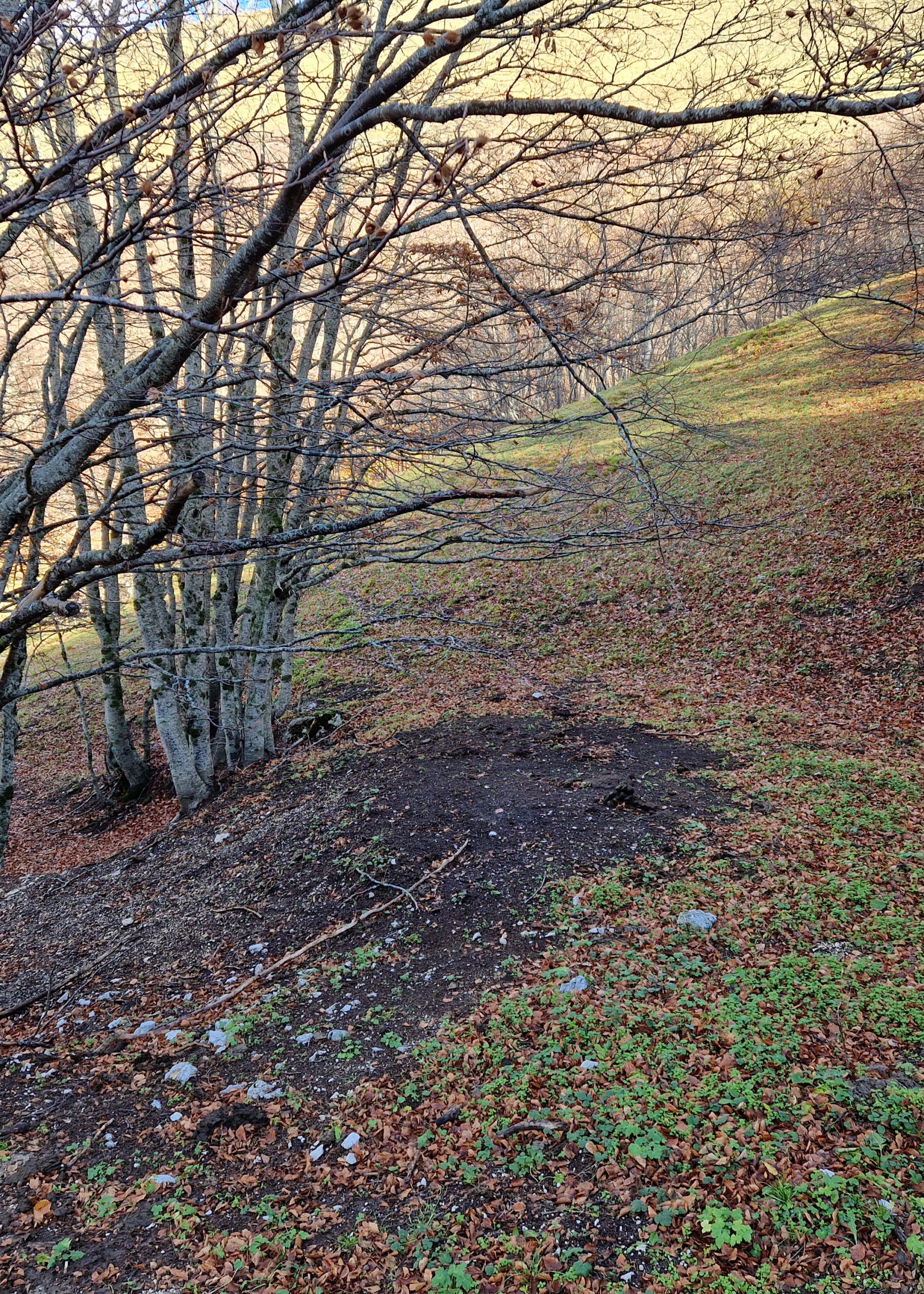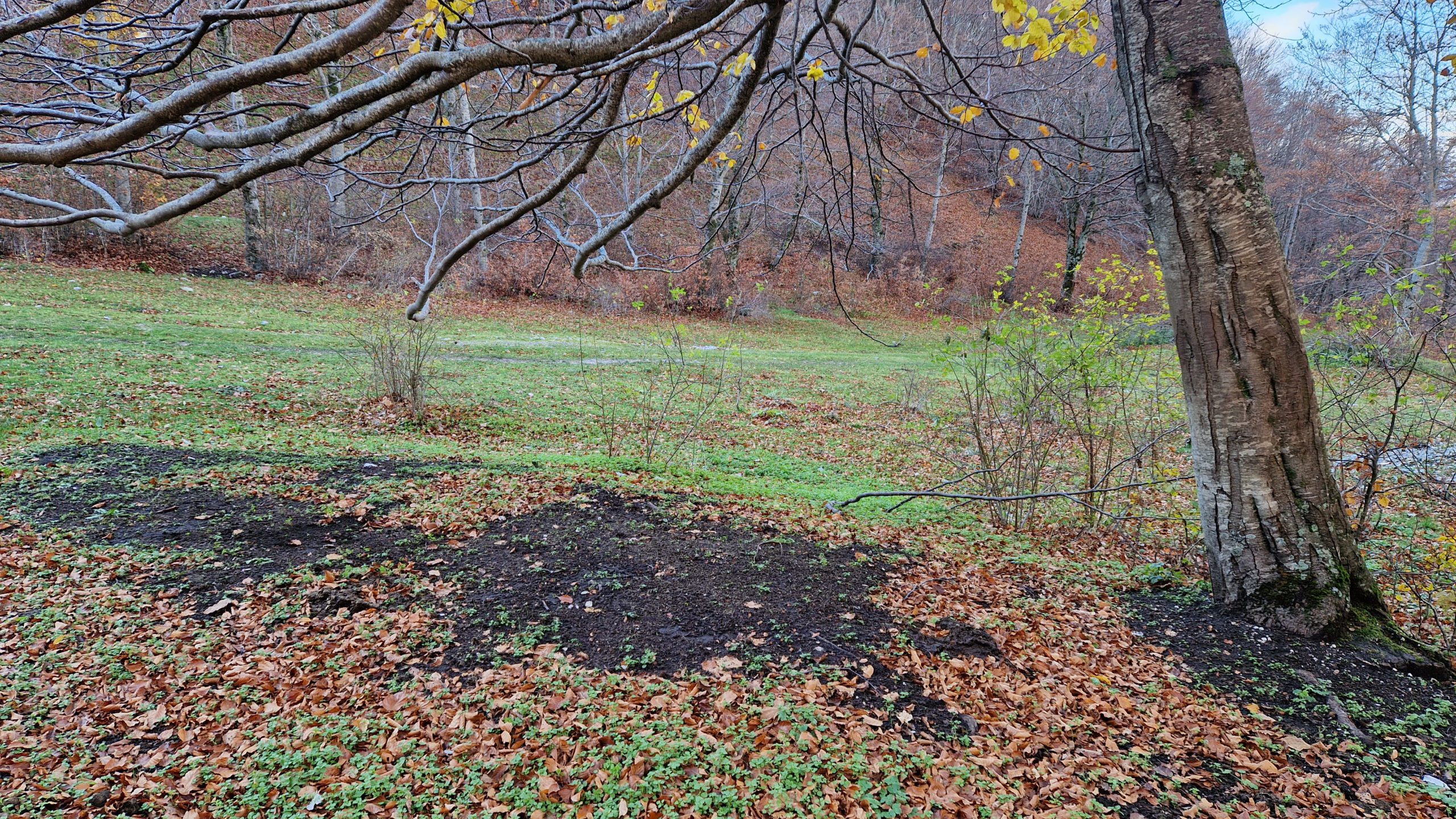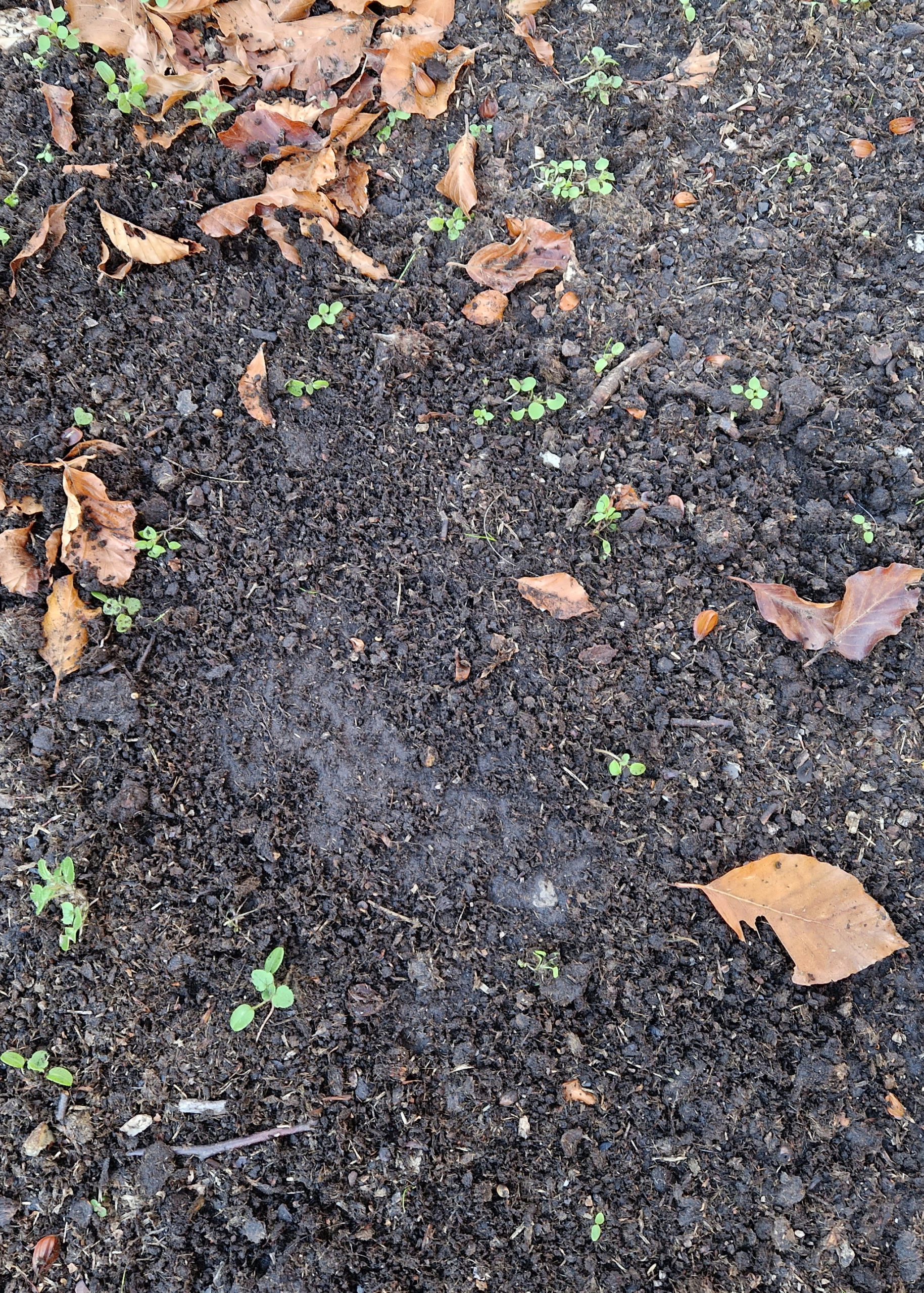Crossing this wide impluvium, at the edge of the path, you will notice several areas like this one, perfectly flat and characterized by a very dark ground: these are clearings once used for charcoal production. Once the site was prepared, the wood was stacked according to a precise pattern, leaving a sort of chimney in the center for the emission of smoke. The pile of wood was then covered with plant material (leaves, brushwood, etc.) and rammed earth, in order to create an airtight environment. The cooking process could last up to 10-15 days in the case of very large charcoal piles; after it was over, it was dismantled: once it had cooled down, the charcoal was placed in bags and transported to the town, where it was distributed for domestic and productive uses. Beech wood, which is dominant in this area, was one of the favourite hardwoods for charcoal production.





